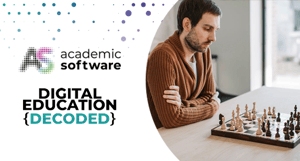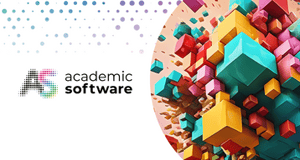support hybrid education online learning digital transformation
Towards a hybrid education model
Digital technologies in the classroom
A survey of the 35 OECD member countries in 2015 showed that schools that made extensive use of computers in the classroom performed substantially worse. This was even more evident when the student's social background was taken into consideration. In other words, the performance of more vulnerable students was significantly less good. Furthermore, the most vulnerable students made the worst use of digital technologies. There are many lessons from this, but one might be that offering subject re-sits through virtual spaces is not a good idea. The report highlights something we have known for decades: there is an obvious lack of evidence regarding the impact of using digital technologies in the classroom.
What then is the best point at which to introduce digital technologies in teaching? This article points to some of the factors we must take into account in facing this question.
By now there is sufficient evidence to show that we absorb less information reading text on digital screens than when reading on paper. On the other hand, we also know the effect of order and choice in the presentation of content – teaching materials, if presented in an inappropriate order, can even be detrimental to learning. A human, a teacher, does this with relative ease. A machine has a hard time interpreting the context in order to decide what the best order is. Unless this is canonical, of course: the story will always be presented in chronological order. So, we can see that an algorithm is not the most appropriate for choosing the order of readings and exercises when it is not clear how to calibrate learning capacity. We also know that it is desirable for a student to participate in the resolution of appropriately challenging difficulties – problems that are difficult to solve. It is also important that students, especially at an early age, write by hand, do not learn excessively from their mobile devices, and that gamification techniques are not overused either.
Supporting students and personalising training
Once we have understood the context of the use of different digital tools in education, we can talk about other elements of this hybrid education. In Episode 3 of the Digital Education podcast we discuss these issues with Cristina Villalonga and Lorena Delgado. Both of them, communicator and psychologist, note the skills that a teacher should have in the online learning environment. They say the methodology should adapt to the context and not the other way around. That is to say, that a distance learning student, with technology brokerage, requires new codes and registers of communication, as well as understanding the relevance of discipline, planning and time organisation. Therefore, considering that the core focus must be given to the student, the other elements must be adapted to facilitate learning.
The changing role of the teacher in hybrid education
In this context of hybrid education, there are three additional elements that we must ensure to provide an education of good quality: supporting students, personalising their training appropriately, and providing the necessary digital skills to both the teacher and the student. Cristina and Lorena, who work at the Antonio de Nebrija University, which this year commemorates the 500th anniversary of the death of Antonio de Nebrija, explained that their motto is “Digital Humanism” – reminding us that we should not introduce any technology without looking at its impact on the dynamics between teacher and student.
Therefore, the role of the teacher may change. In addition to being experts in the subject matter they teach, teachers must be good communicators and group managers. They should rely on technology to regulate learning and know how to introduce it at the right time and in the right context – being a guide rather than just a speaker. With all the learning material available on the internet, which is often mistaken as a substitute for the role of a teacher in the classroom; it is more important than ever to offer students a path to learning.
The student as a conscious agent of learning environment
We must also understand that one of the likely legacies of the pandemic is distance education. Going back to our question at the beginning – we are entering a hybrid era, where face-to-face and remote learning will co-exist. This will force us to rethink the education value chain, taking the best from each mode. The relevance of the inclusion of technology to channel hybrid learning puts us on a path to where the student can become a conscious agent of the building of their own personal learning environment (PLE) at university, which they will build upon as they continue learning throughout their life and professional future.
Education is a very serious matter. We have ample evidence that at certain ages it can condition the future, not only of a student, but of the group that surrounds them. Therefore, any technological experiments that aren’t closely connected to the learning outcomes of students seem to me to be too great a gamble.


